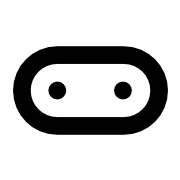Introduction to Buffers
A buffer is a crucial concept in programming, serving as a temporary storage area for data. It acts as a transfer stop for data coming from various sources, such as network operations or pin interactions. When a program is ready to process data, it can read from the buffer, ensuring efficient data handling and transfer. Buffers are particularly useful in scenarios where data needs to be prepared for transmission to devices or other memory locations, such as in micro:bit programming.
Key Features:
- Data Storage: Buffers hold data temporarily, allowing programs to manage data flow effectively.
- Data Manipulation: Functions like
createBuffer,getNumber, andsetNumberenable easy manipulation of data within the buffer. - Flexible Size: Buffers can be created with varying sizes, accommodating different data requirements.
- Data Shifting: Buffers support operations to shift data contents, facilitating dynamic data management.
Use Cases:
- Microcontroller Programming: Buffers are essential in microcontroller applications, where data from sensors or inputs needs to be processed before use.
- Network Communication: Buffers help manage data packets in network communications, ensuring smooth data transmission and reception.
- Real-time Data Processing: In applications requiring real-time data handling, buffers allow for quick access and manipulation of data streams.

